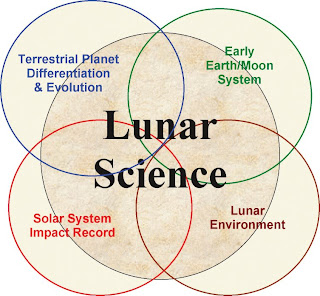A review of the global history of human exploration clearly shows that those events were nationally inspired and supported with the exception of some outstanding individual ventures. Credit, or discredit, went to the country that supported the exploration program. This is also the case, to date, in our space exploration accomplishments with some very notable exceptions (NASA, ESA, JAXA ROSCOSMOS,, etc. combined projects) that include the International Space Station.
Our view is that future space exploration programs that involve our solar system and beyond should become, as much as possible, international efforts with full participation by as many nations as possible. Our previous blog post about a
Global Space Congress (GSC) addresses this concept in more detail. It is anticipated that even within a global network there will be many single nation missions to explore deep space, and especially our Moon and some Near Earth Objects (asteroids and comets).
A major benefit to this arrangement is the establishment of a set of protocols that govern the exploration missions whether by an individual member country or a multi-national mission. The critical benefit, however, is a complete sharing of discoveries and data with all members of the GSC. Additionally, no single member country, can claim sovereignty over all or part of an explored space object (planet, moon, asteroid). Sovereignty always rests with the GSC.
Will the development of exploration protocols be a long and arduous task? We believe that will not be the case because there exists some excellent protocols that were created to govern the international exploration of Earth's South Pole region (Antarctica) as well as the Space Exploration protocols that have been developed by the United Nations (
UNOOSA) The set of protocols for international exploration of the poles is contained in the
ANTARCTIC TREATY.
Because the focus of this blog is on the exploration and development of a Moon Base, we envision an extraction of guidelines from the above two international protocols that would comprise the LUNEX Protocols that would govern the Moon Base Apollo program. We believe this is necessary to give full consideration to eventual commercial ventures on the Moon and to insure that all member nations of the GSC and their commercial interests have full representation under the Lunex Protocols. These special protocols would also attend to the need to preserve and protect what we term
Moon Aesthetics.
Well, this would appear to be a sound approach, but seems to ignore the existence of the United Nations space programs. We emphasize here that they are not being ignored, rather we envision extracting the entire structure away from the UN and into the structure of the GSC. We urge this because the UN by design and nature can be too cumbersome in its response to the many issues that can arise in the full arena of space exploration. Many of these issues will be very critical and possibly life threatening in nature and will require quicker and more effective reactions to those needs. We see the GSC as the optimum application of that approach.
In summary, all of this is about relating all matters that pertain to space exploration to a global vision that clearly includes all citizens of planet Earth. As such this is a vital beginning to the ongoing evolution of humankind and the creation of a global space society. The mission, the hope, the goal is that we, the people of planet Earth go forth and explore in peace and with unity of purpose.
CREDITS:
Image: Apollo 9: EVAs by Astros Schweickart and Scott. Scott is shown exiting the CM. Schweickart started his spacewalk from the LM. Photo courtesy of NASA.
Antarctic Treaty: We wish to acknowledge the suggestion about the Antarctic Treaty that came from a fellow SpaceTweep(@fizzvicc) on Twitter. It is an excellent approach that uses an existing and well respected treaty as a model. Thank You.




